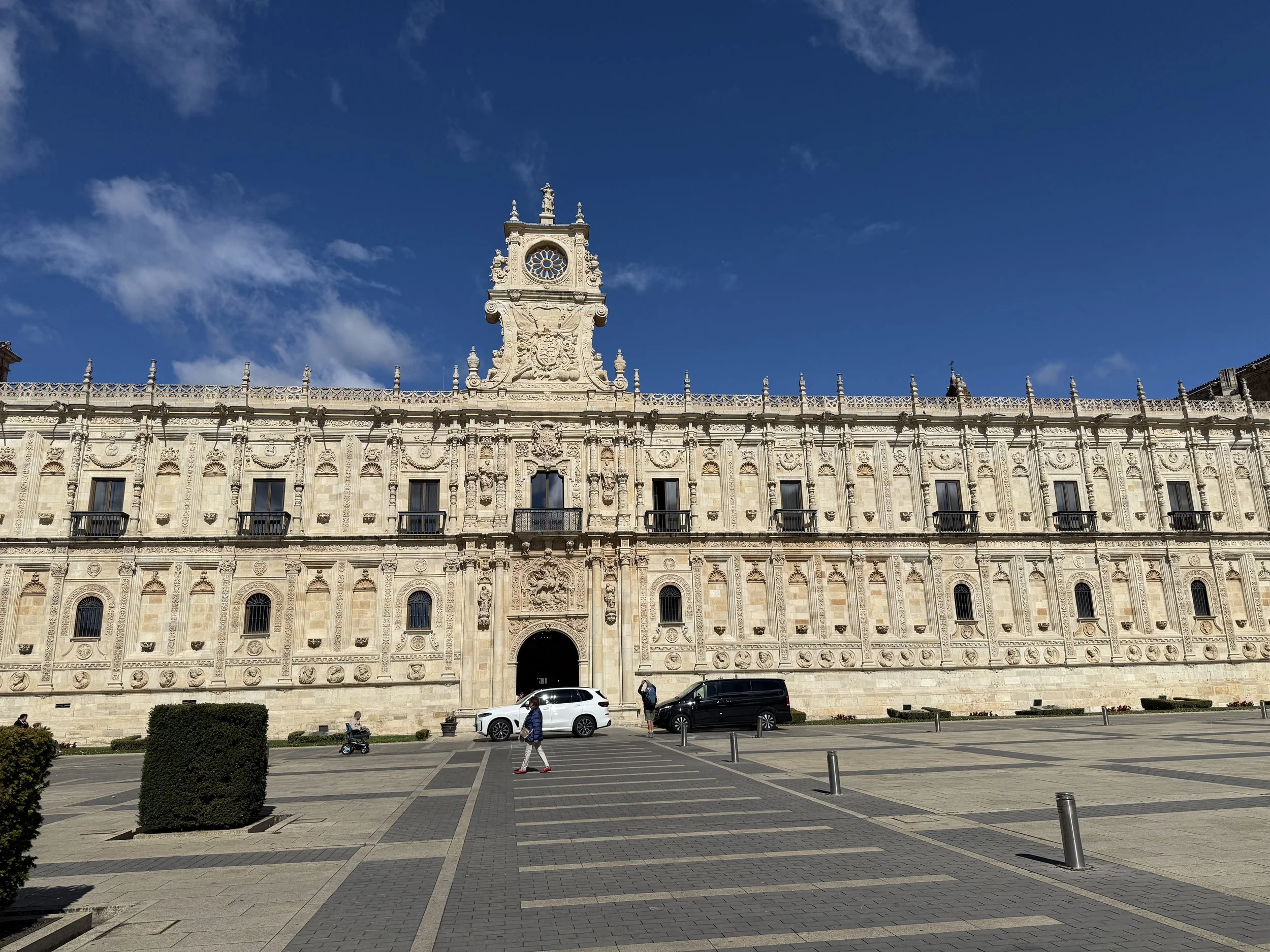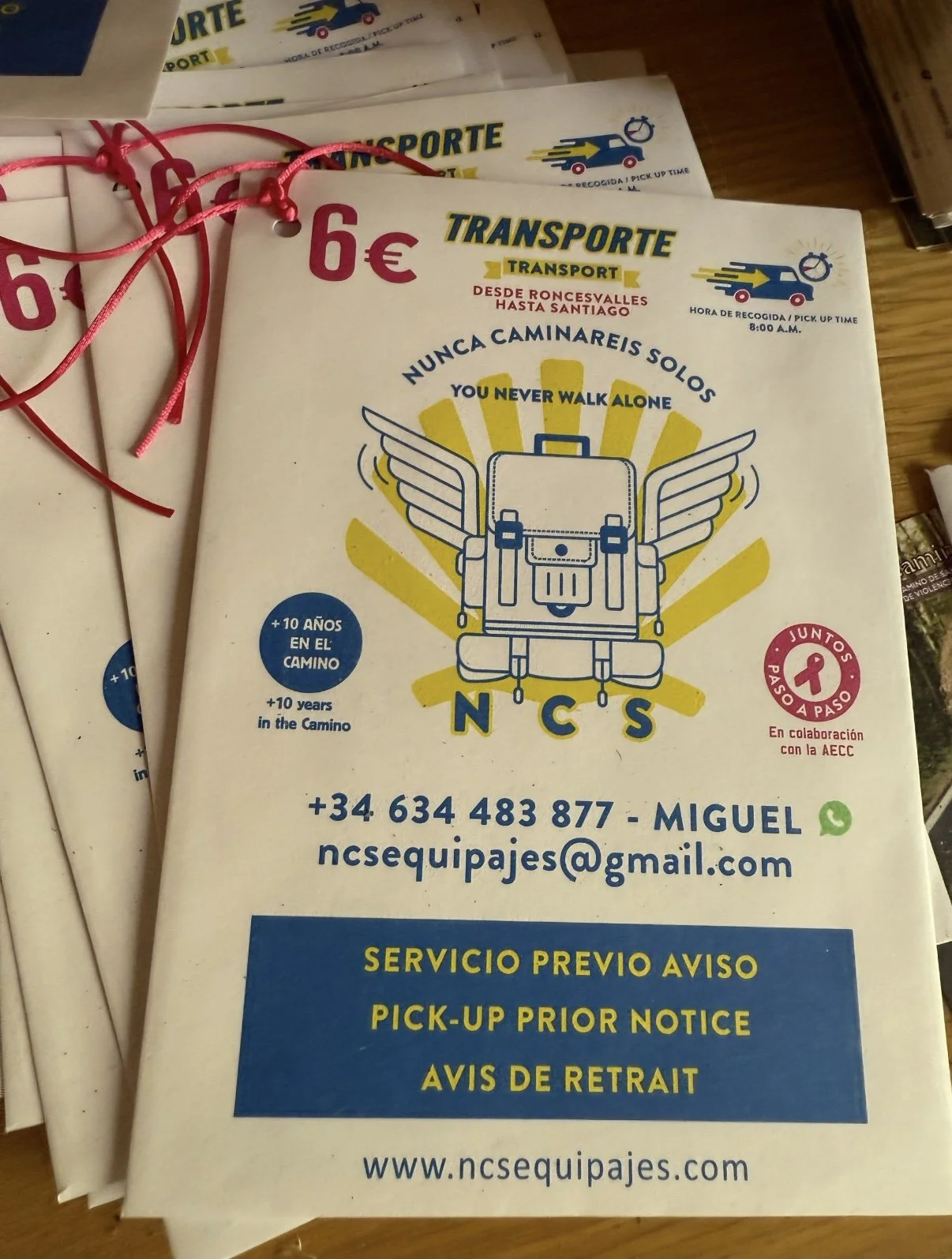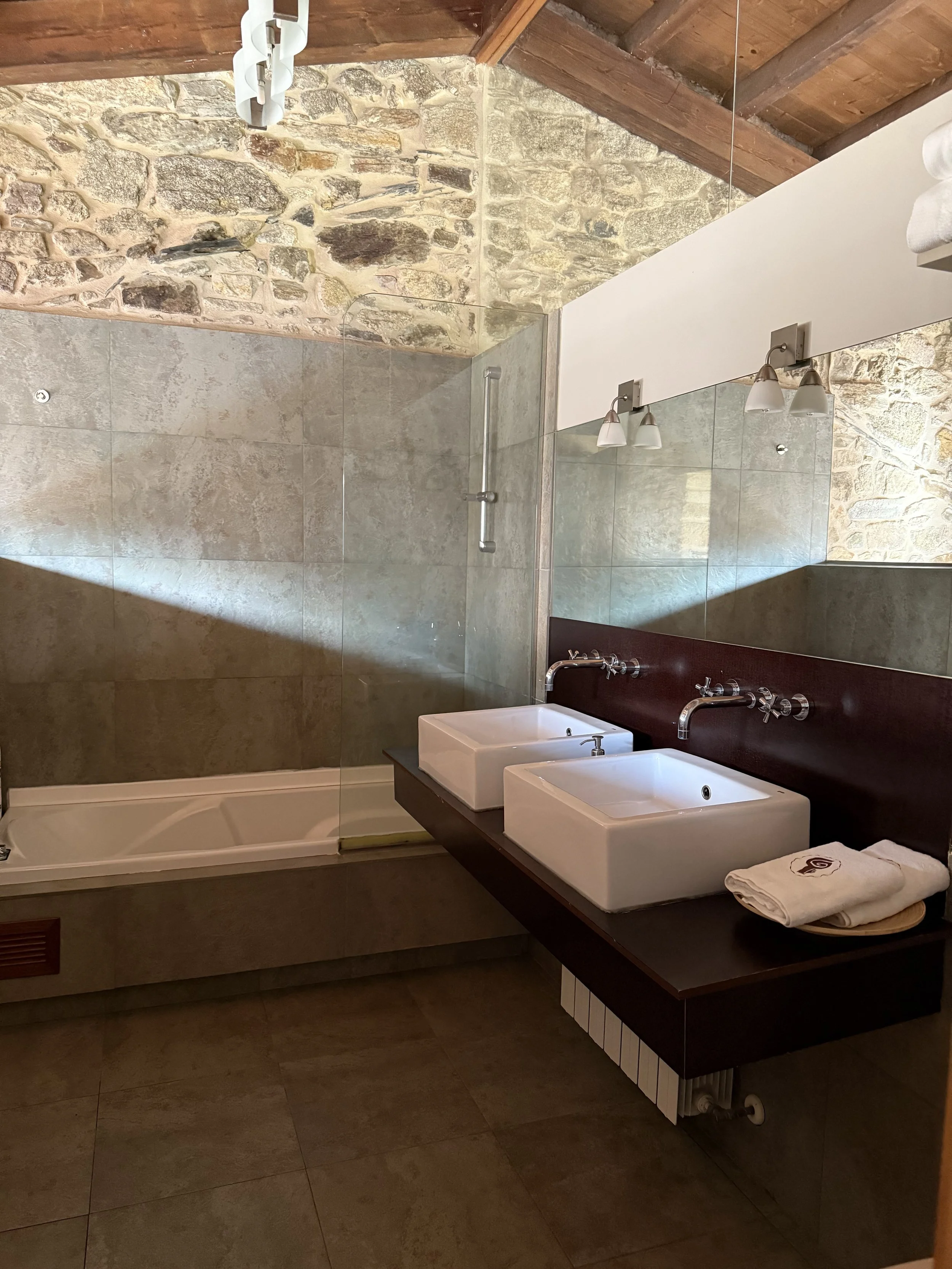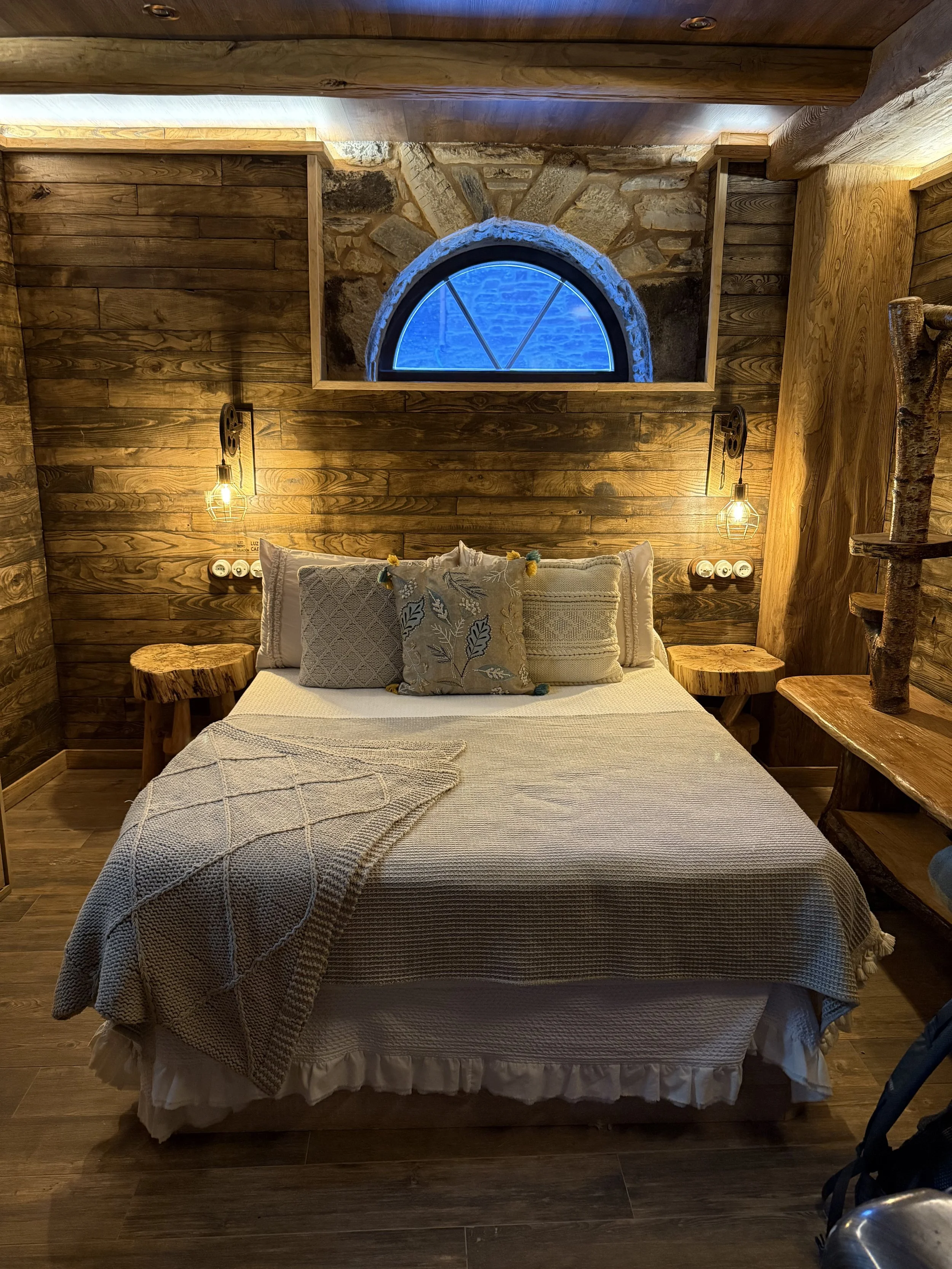Best Places to Stay on the Camino de Santiago: Albergues, Hotels, and More
Resting Well on the Camino
After a long day of walking — whether 10 miles or 20 — there is nothing better than setting down your backpack, kicking off your shoes, and sinking into a comfortable bed.
When I walked the Camino de Santiago, I was overwhelmed by the number of options: albergues, private rooms, hotels, and even luxury stays. Each type of accommodation offered a completely different experience.
This guide will help you:
Understand the types of places to stay on the Camino
Decide which option fits your budget and travel style
Learn tips for booking and finding the perfect spot each night
Whether you’re a budget traveler, a comfort seeker, or somewhere in between, there’s a place for you on the Camino.
Related Post: Top 15 Must-See Towns Along the Camino
Types of Accommodation on the Camino
The Camino is unique because of its diverse lodging options.
Here’s a breakdown of what you’ll find along the way:
1. Municipal Albergues (Public Hostels)
Best For: Budget-conscious pilgrims and those seeking a true Camino community experience.
Municipal albergues are run by local towns or churches. They are simple, affordable, and often have a warm, communal atmosphere.
Features:
Bunk beds in dormitory-style rooms
Shared bathrooms
Basic kitchen facilities (sometimes)
First-come, first-served basis
Typical Price: €5–€10 per night
Why they’re great:
There’s something special about staying in a public albergue — sharing meals with fellow pilgrims, swapping stories, and feeling connected to centuries of tradition.
There are several apps and tools that pilgrims use to find and in some cases book albergue stays (or at least private albergues) along the Camino de Santiago. None are perfect, especially because many municipal or donativo albergues don’t accept reservations or even show up in mainstream booking platforms. But some apps make planning much easier. Here are the best ones, how they work, and tips for using them well.
FOLLOW THE CAMINO CHRONICLES
FACEBOOK: THE CAMINO CHRONICLES
Apps & Tools That Help with Albergue Booking / Finding
Camino Ninja
Offline route maps, elevation & distance info, listings for accommodations along the route.
Yes — you can book some accommodations directly through the app.
Doesn’t cover every albergue. Some listing are just info-only.
Buen Camino App
Very popular Camino guide. Shows stages, maps, accommodations along route plus services,Warnings, etc.
It provides contact info for many places; some are private albergues or hotels you can reserve. But many municipal albergues still don’t accept reservations.
For peak season or popular paths you still need backup. Also, offline features are useful but not always perfect.
Wise Pilgrim
Camino-specific guide info, shows where albergues are, links to WhatsApp or booking, maps, towns, reviews.
It allows contact / reservation for private lodging, or helps you find accommodations. Some private albergues show up.
Municipal/donativo albergues usually don’t appear with reservation capabilities; more for planning and discovery.
Gronze.com
Well-loved by pilgrims. Comprehensive lists of albergues, hotels, reviews, contact info.
Sometimes gives link/contact to book, or shows whether places are full; private ones more likely.
As with others, many public albergues are not bookable. Sometimes info is outdated or missing.
Booking.com
Broad and reliable for private albergues, guesthouses, hotels. Good for private rooms, guaranteed reservations.
Yes — for places listed there.
Misses many authentic albergues; many don’t show up. Also can be more expensive than local options.
Albergue websites / direct contacts (WhatsApp, email)
Many albergues prefer direct messaging. Apps often give you phone or WhatsApp contact.
Yes — direct booking is often best for private albergues not listed elsewhere.
Need to be able to communicate (sometimes in Spanish), and expect variable response times.
What to Know / Caveats
Municipal & Donativo Albergues Often Don’t Take Reservations
Many places operate strictly first-come, first-served. Even if an app shows them, you may not be able to reserve ahead.“Full” Listings Aren’t Always Accurate
App/booking platforms sometimes show “full” even when they hold a few beds back for pilgrims arriving in person. It’s always worth checking by calling or asking locals.Offline Access Helps
Because cell service can be spotty on parts of the Camino, apps that allow offline map/data downloads are super helpful. Camino Ninja and Buen Camino both support offline usage.Language & Communication
Some albergues or private stays don’t respond quickly via email. Using WhatsApp (if contact is listed) or phone sometimes works better. Having phrases in Spanish ready helps.Booking Ahead in Peak Season
In summer (especially July/August) or high pilgrimage times (holy years), places fill fast. Reserving where you can is wise. For places that don’t accept reservations, trying to arrive earlier in the day helps.
My Suggestion for Best Strategy
From my experience:
Use something like Buen Camino + Camino Ninja for mapping, seeing what’s ahead, and planning days.
For nights where comfort or guaranteed bed matters (after hard walking sections, big towns, at the end of day, etc.), try to book private albergues or hotels in advance using Booking.com or the app’s contact info (WhatsApp/direct).
Leave some nights flexible for spontaneous stays or if you want to stay at special municipal/donativo albergues that might only accept walk-ins.
Always carry a backup list of albergues in the upcoming towns with phone numbers in case you’re caught without signal or reservations.
Pro Tip: Arrive early (by 2–3 PM) during peak season to secure a bed, especially in popular towns like Roncesvalles or Sarria.
2. Private Albergues
Best For: Pilgrims who want a bit more comfort while still keeping costs low.
Private albergues are similar to municipal ones but are privately owned, so they often have upgraded amenities.
Features:
Smaller dorm rooms with fewer beds
Cleaner, more modern facilities
Extras like laundry service or breakfast
Typical Price: €10–€15 per night
Why They’re Great:
I found private albergues to be a good balance — still social and budget-friendly but with a little more privacy and comfort.
3. Hostales and Pensions (Budget Hotels)
Best For: Those seeking privacy and a break from communal living.
If you need your own space after several nights in dorms, a hostal or pension is perfect.
These are small, family-run inns with private rooms.
Features:
Private rooms, sometimes with ensuite bathrooms
Towels and linens provided
Quiet atmosphere
Typical Price: €25–€50 per night for a single room
Personal Tip:
I liked booking a pension to recharge and do laundry without a crowd around.
4. Hotels
Best For: Pilgrims who prioritize comfort or are walking with luggage transport services.
Hotels along the Camino range from simple two-star properties to luxurious four-star stays.
Features:
Comfortable private rooms
Daily housekeeping
Restaurant or bar on-site
Perfect for rest days or special occasions
Typical Price: €40–€120+ per night
Why I Recommend Them:
On my Camino, I splurged on hotels in larger cities like Burgos, León, and Santiago.
These stays made my rest days truly restful and felt like a reward for all the miles walked.
Related Post: How to Get Your Compostela Certificate in Santiago
Get Your Gifts and Gear Here
5. Casa Rurales (Country Homes)
Best For: Travelers looking for charm, tranquility, and a local experience.
These are traditional country houses converted into guest accommodations.
They are usually in quieter villages or rural areas.
Features:
Unique, cozy atmosphere
Homemade meals from local ingredients
A chance to meet local hosts and learn about the region
Typical Price: €40–€80 per night
Why They’re Special:
Staying in a casa rural gave me a deeper connection to the culture and slower pace of Camino life.
I was lucky enough to stay at this beautiful Paradore in Leon, for my birthday.
6. Paradores (Luxury Stays)
Best For: A special treat at the end of your journey.
Paradores are historic buildings, like monasteries or castles, transformed into luxury hotels.
The most famous is the Parador in Santiago, right next to the cathedral. Don’t miss this one. You will love it.
Features:
Stunning architecture and history
Exceptional comfort and service
Fine dining restaurants on-site
Typical Price: €150–€250+ per night
Personal Experience:
I stayed in the Santiago Parador after completing my Camino, and it felt like the perfect way to celebrate my accomplishment.
Booking Your Accommodation
Here are some tips for planning and booking places to stay along the Camino:
1. First-Come, First-Served vs. Reservations
Municipal albergues cannot be reserved — arrive early to secure a bed.
Private albergues, pensions, and hotels can usually be booked online or by phone.
2. Booking Apps and Websites
Booking.com – Great for hotels and private albergues.
Gronze.com – Popular with pilgrims for up-to-date info.
Buen Camino App – Camino-specific maps and lodging details.
3. When to Book in Advance
If walking in July or August (peak season).
When staying in popular towns like:
Roncesvalles
Sarria
Santiago
If you require private rooms every night.
There are many luggage transfer companies.
4. Consider Luggage Transport Services
If you’re using a service to transport your main bag each day:
Book accommodations that participate in luggage transfer programs.
Ask ahead to ensure they can receive your bag.
Related Post: The Complete Packing List for the Camino de Santiago (What You Really Need)
Suggested Strategy for Comfort and Budget
When I walked my Camino, I mixed up my accommodations for the best experience:
Most Nights: Private albergues for socializing and affordability.
Every 4–5 Days: Pension or budget hotel to recharge privately.
Rest Days: Larger hotels in cities like Burgos or León.
Final Night in Santiago: Splurge at the Parador for a memorable ending.
Sample Budget Per Night
Municipal Albergue
€5–€10
Private Albergue
€10–€15
Pension / Hostal
€25–€50
Hotel
€40–€120+
Casa Rural
€40–€80
Parador
€150–€250+
Note: Prices vary based on location, season, and availability.
This is a wonderful bathroom in a Country House along the Camino.
Packing Considerations for Accommodations
Sleep Gear:
Lightweight sleeping bag or sleep sack (for albergues)
Eye mask and earplugs for dorms
Toiletries:
Travel-size items to save space
Quick-dry microfiber towel
Extras for Comfort:
Small pillowcase (can be used with extra clothes as a pillow)
Flip-flops for showers
Related Post: The Complete Camino Packing List
This is a cozy private room in O Cebreiro.
Final Thoughts: Finding Your Home Each Night
The Camino is about more than just walking — it’s also about rest, renewal, and connection.
The places you stay become part of your story, from sharing laughter in a crowded albergue to savoring a peaceful evening in a cozy country inn.
As you plan your Camino, remember that there’s no “right” way to experience lodging.
Mix and match, experiment, and find the rhythm that works best for you.
Wherever you rest your head at night, you’ll wake up ready for another unforgettable day on the Camino.
Call-to-Action
Ready to plan your Camino journey?
Download my free Camino Packing Checklist to prepare with confidence.
Read my Stage-by-Stage Camino Francés Breakdown to map out your daily stages.
Follow Camino.Chronicles on Instagram for tips, updates, and daily Camino inspiration.
Buen Camino, friends!
Renae



